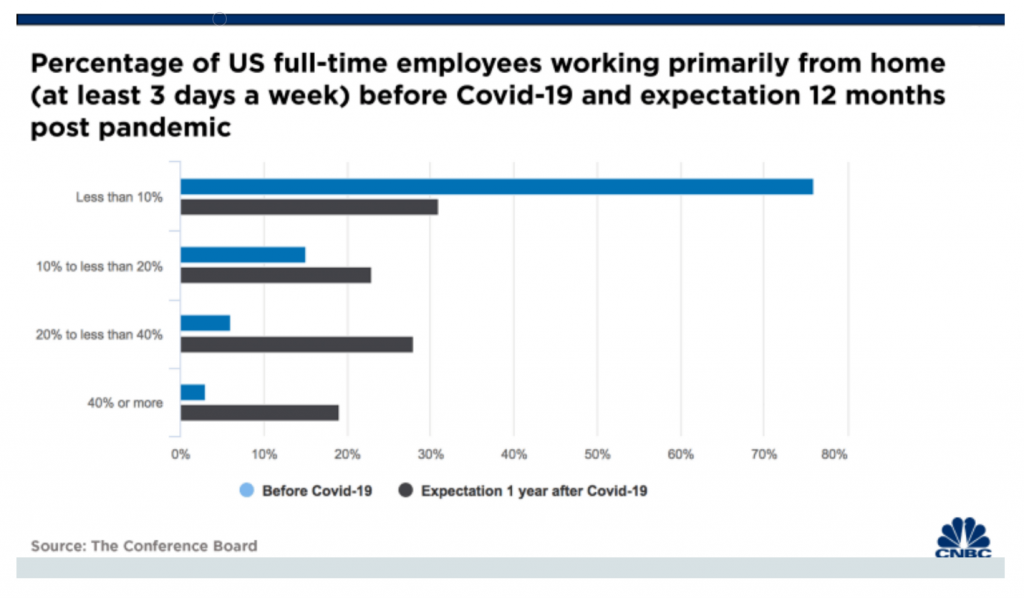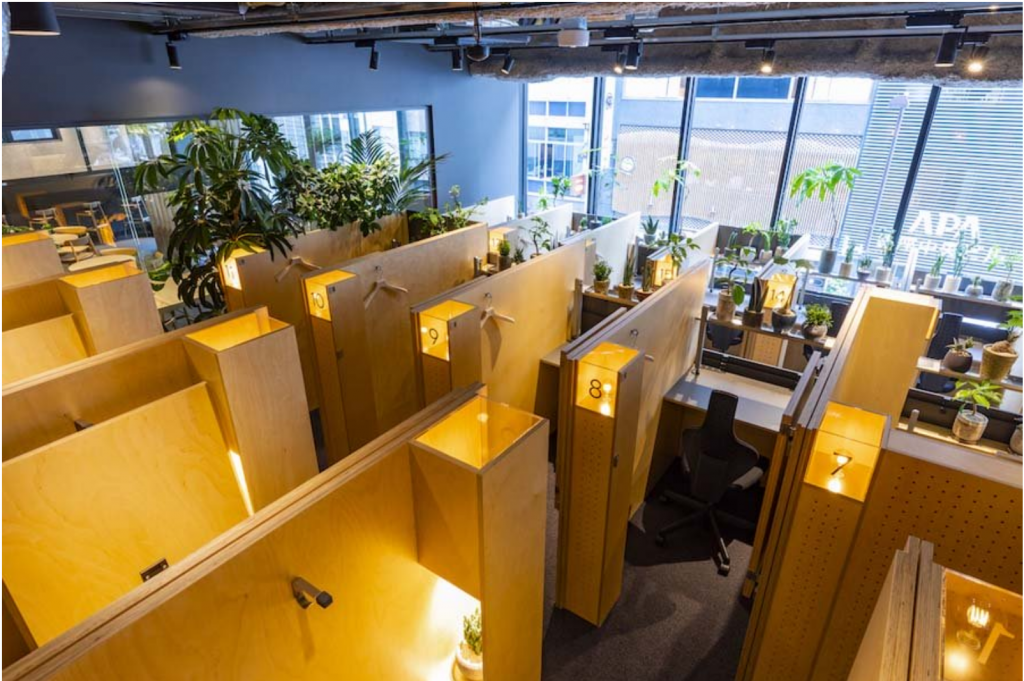Remote working is not a new concept.
It has been used in marketing material for many years for courses to become your own boss or a freelancer.
There’s a picture of someone with their toes in the sand and a computer. Then some promise of how much money you could make writing from the beach.
The digital nomad lifestyle has picked up over the past five years, even before the Coronavirus.
Even part-time work from home is nothing new. Employees have been trying to make the case to resistant managers that they will be more productive without the stress of a commute. Instead of those work from home days are usually reserved for staying home with a sick child so that a day or work isn’t missed.
My point is that Coronavirus didn’t create the working remotely model. But what it did do was accelerate the trend.
Even the most resistant managers are now seeing that companies didn’t fall apart when communities shut down and working from home was the only option.
These companies were forced to incorporate the software and tools for remote options or shut down for at least 90 days. Many adapted.
As communities are starting to find a sense of normal, offices find themselves still in a tough situation. They can now change up the office to accommodate social distancing or they can just keep working from home.
Many are starting to have a conversation about how much office space costs and why they keep paying for it at all.

Forty-eight percent of employees will likely work remotely at least part-time now.
The trend also allows companies to save costs by eliminating some full-time employees. Thirty-two percent of organizations are using contingent workers or freelancers to save on costs. The bonus is that these workers can now be anywhere. So, employers are vastly expanding the potential to attract great talent.
It seems like win-win for everyone…until the blur between personal and business life starts to set in.
This Unexpected Company Offers a Solution
Some people are all set up with a dedicated space working from home. And if you ask any Best Buy employee, they’ll tell you that printers and other devices sold out quickly at the beginning of the initial shutdown. It was a rush to set up at least a makeshift office.
Having a dedicated area helps most people shut their computer and "leave the office" for the day.

Grab a piece of paper and pen to write this down…
Because you’re about to see the name and ticker symbol of the ONLY 5G STOCK every investor should own.
You can get the name and ticker of this company right here, no strings attached. But you better act fast…
Because the Federal Communications Commission, the government agency in charge of 5G, just scheduled a major announcement that would send shares soaring once announced.
Don't miss out. Click Here to Get #1 5G play for 2020 before the next market close.
That’s the theory that coworking spaces have been trying to cash in on for years. But they just can’t seem to get the numbers to work.
To get foot traffic and exposure to working people, you’re looking at real estate in some of the most expensive cities. Space needs to be convenient and a short commute from potential users. Since really if these people wanted a commute, they would just work at an office.
The demand just hasn’t been there.
WeWork’s failed IPO is a good example. It couldn’t survive the financial scrutiny as investors called it out as what it really is…. a real estate play…not some fancy tech startup.
But, with more and more people working from home, the argument is strong that spaces like these will be needed…it’s just still a question of what that will look like and what people are willing to pay for it.
That’s where coffee giant Starbucks (NASDAQ: SBUX) is making waves.
Starbucks Japan just unveiled a two-story café located inside the Ginza district in Tokyo. It’s is a collaboration with ThinkLab. The bottom floor is essentially a traditional Starbucks. And the top floor is decked out like a coworking space.
It’s equipped with four private phone booths with videoconferencing capabilities and a smart lounge equipped with projectors and conference phone speakers for all your collaboration needs. Plus 17 solo spaces are available for distraction-free work time.

The amenities can be booked ahead of time at different intervals, so customers don’t have to pay for more time than needed. The solo spaces break down to approximately $2.83 for 15 minutes. It’s the benefits of coworking space without the monthly membership dues.
The unfortunate part is that Starbucks does not have plans to replicate this idea in other parts of the world. But with any new idea, that could change based on success and demand.
I point this all out because this is a big trend to watch for throughout the end of 2020 and into 2021. There is a demand for coworking spaces. It will continue to grow. And what we will see is creative solutions to the problem that will actually be sustainable.
This is just one of the many trends that I continue to watch every day so that you don’t have to. Identifying the trends early is how you can get in and profit the most.
That’s how my readers of Wealthy Technology Investor have been able to lock in triple digits gains on tech stocks in just the past year.
If you want to join them in profiting from the ever-changing landscape check all the details here.
To your prosperity and health,
Joshua M. Belanger
Executive Publisher & Founder